Snake plants are one of the first plants I recommend to anyone just starting to get into houseplants. They’re unbelievably easy to take care of and are a great accent in any room.
They are also great for all types of light environments from low light to brighter indirect light making them a great option for corners of bedrooms that don’t get much light, offices with fluorescent lighting or even your living room with brighter light!
Snake plants, also called Sansevieria trifasciata plants, are dark green with narrow leaves that come to a point at the tip of the leaf that look sort of like a snakes tongue (hence the name, snake plant)! Their leaves also have gray-green horizontal stripes.
Once you know what a snake plant looks like, you’ll start noticing them in hotel lobbies, shopping mall corners, office buildings and other public spaces. And of course many homes, too!
Part of the reason you may be seeing them everywhere is because they are so easy to grow and equally easy to propagate! You can take your single snake plant and propagate it to fill every corner of your house or to give away to friends and neighbors.
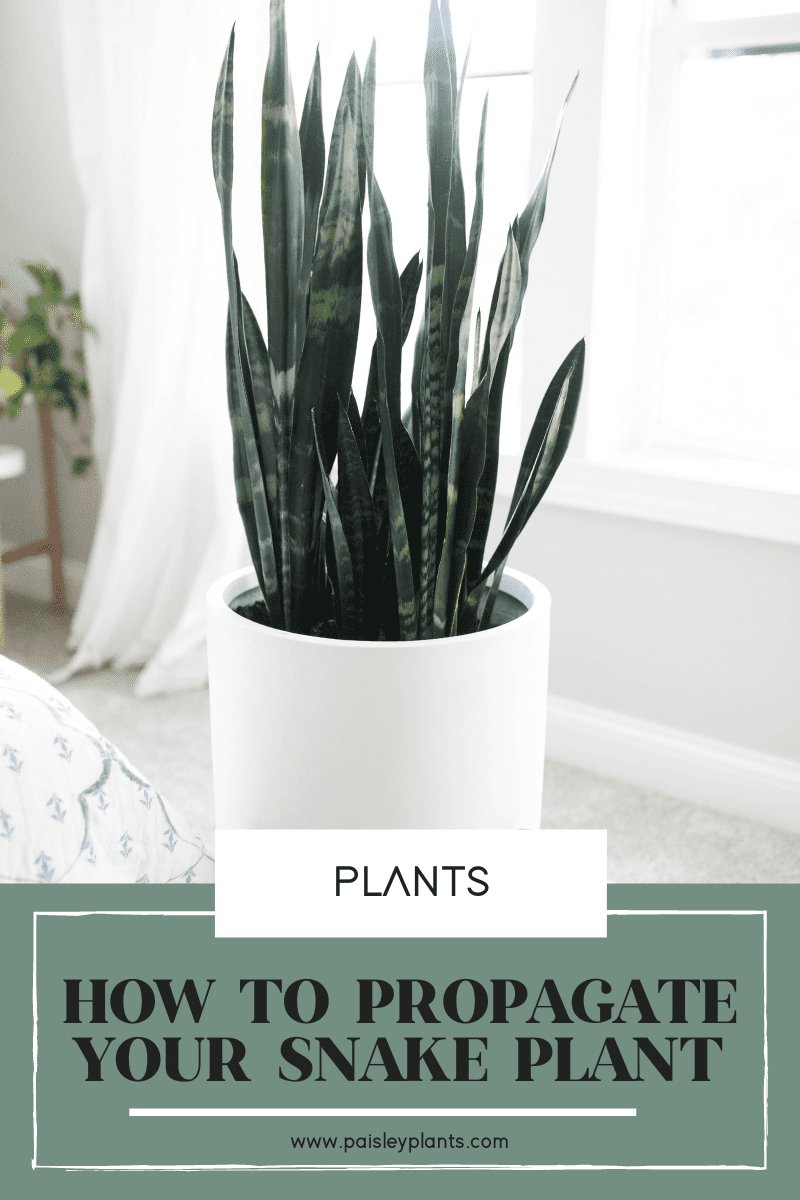
Table of Contents
Background on Snake Plants
Before we learn how to propagate it, here’s a short history of this pretty ornamental plant.
The snake plant (Dracaena trifasciata) is native to West Africa. It’s an evergreen perennial plant that’s also known by many other names, including “mother-in-law’s tongue” and “Saint George’s sword.” It’s most common name is the snake plant.
As a bonus, it also works as a natural air purifier. Even NASA and other studies reveal that snake plants clean the air from a bothersome host of harmful toxins, including formaldehyde.
One of the most amazing things about snake plants is that it produces oxygen at night! That’s why I keep a few in each of our bedrooms.
*Find other air purifying plants here.
Are Snake Plants Hard to Propagate?
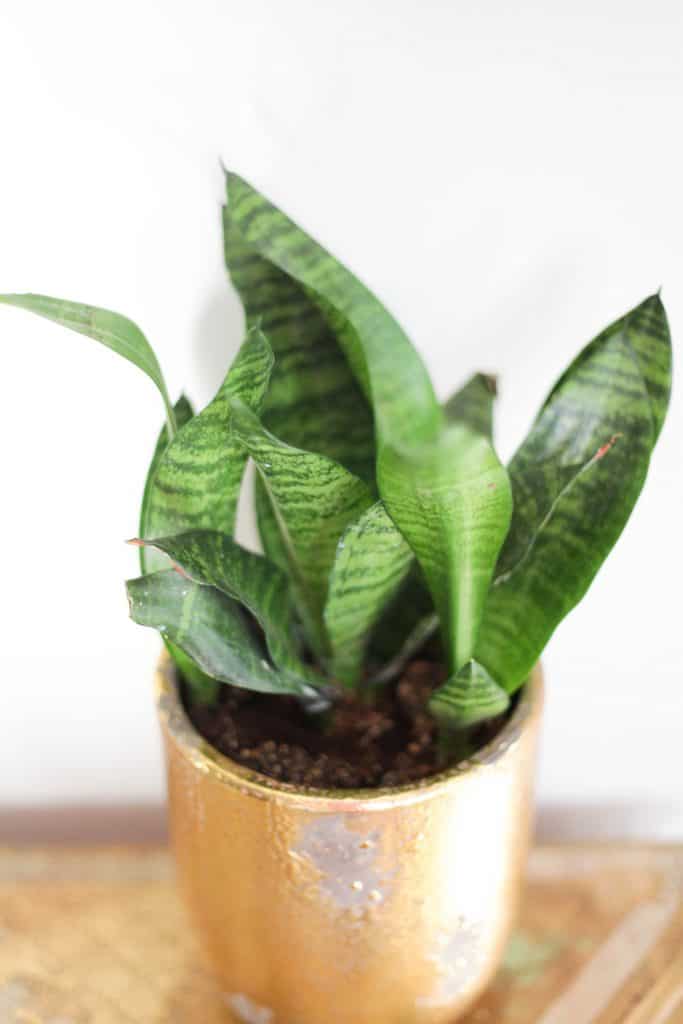
No, propagating snake plants can be learned by anybody. You only need two things to successfully propagate snake plants: love and determination.
It can take quite a while for new roots to form on snake plant cuttings so patience is a good thing to have when propagating your snake plant!
How to Propagate a Snake Plant 3 Ways
There are three easy ways to propagate your snake plant. These different ways are:
- In water
- In soil
- By division
For best results, the best time to propagate your plant is during the growing season (spring or summer) but a snake plant is a resilient plant and can usually survive being propagated year round.
Method 1: Propagating in Water
Water propagation is quick and simple, but requires patience while you wait for the roots to grow. I prefer this propagation method over soil propagation so I can make sure that the roots are forming!
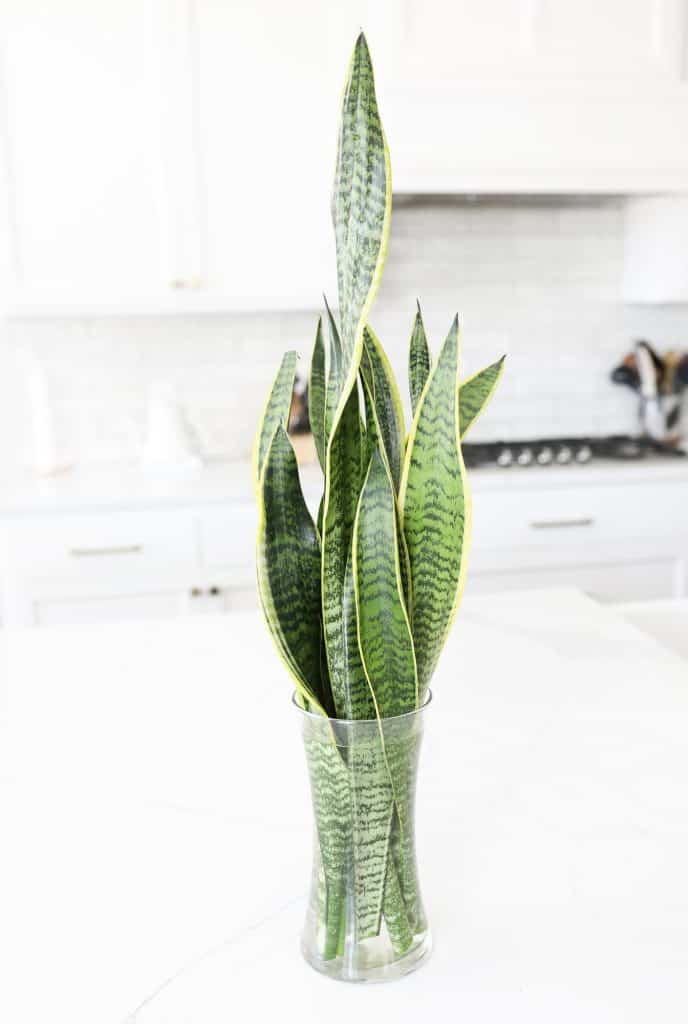
Step-by-Step Guide
- Choose the best leaf from your parent plant. Make sure it’s healthy and not old. (You can pick multiple leaves or just one single leaf – that’s up to you!)
- Using a sharp, clean pair of scissors, cut the whole leaf off neatly from the main plant.
- Place your leaf cutting in clean water in a jar.
- Roots will start to grow as early as 15 days, but the average is about 2 months.
- After the roots have formed, pups (or baby plants) will begin to emerge even before you pot them!
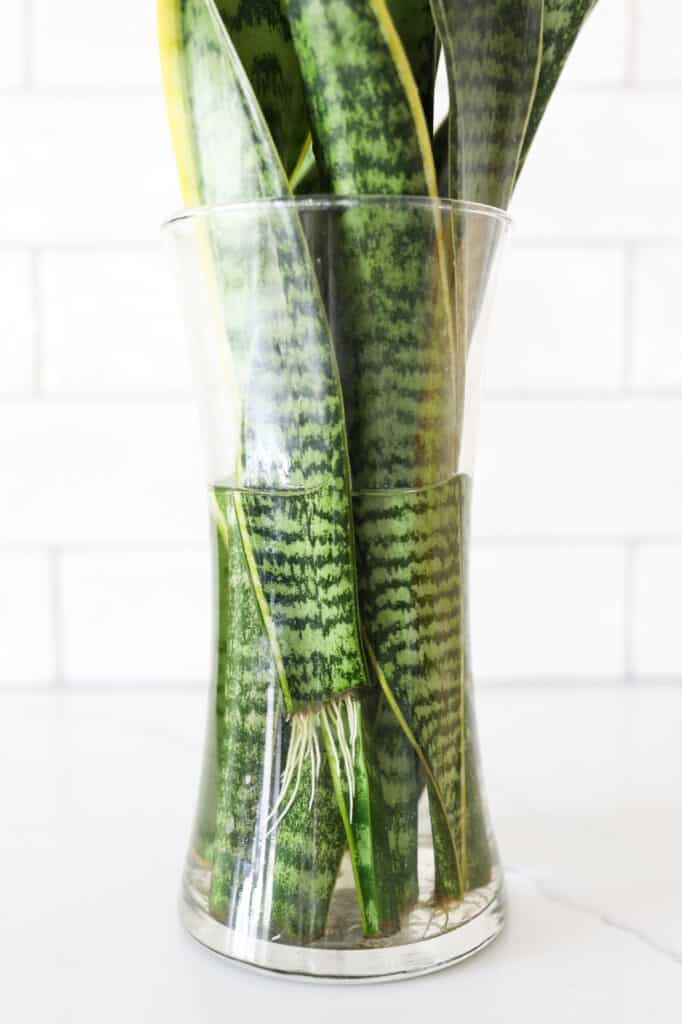
Pros
This is a really fun way to propagate a plant because you’ll feel like a giddy kid with a science experiment every time you check your jar.
There is immense satisfaction in seeing the magic of roots forming underwater and then the pups growing!
Cons
If you propagate a pretty variegated type of snake plant, the new plant will lose its patterns.
The new pups, instead, will grow into a generic green plant. No patterns. No design.
For some reason, you won’t be able to replicate the unique design of the original leaf cutting. Nature can be tricky that way!

This form of snake plant propagation takes a long time since you can actually see if new roots start forming rather than propagating them in soil. Just have patience!
Tips
When propagating in water, make sure that the water is clean and clear. Change it once or twice a week, or whenever you see that the water is cloudy or dirty.
The leaf cuttings can get slimy, which is a warning sign that your leaf cuttings could rot! So it’s prudent to monitor them.

Remove them from the water from time to time to check if they are slimy. If slimy, rinse the leaves in the sink using only warm or tepid water. Use your fingers to delicately remove the slime.
Do not return the newly washed cuttings to the same container. The container should also be thoroughly cleaned using soap and proper rinsing. Then place the newly cleaned cuttings into the newly cleaned container, then add fresh water.

Method 2: Propagating in Soil
Propagating a snake plant in soil is fairly easy to do. Here’s how to create new snake plants right inside your home.
Step-by-Step Guide
- Choose the healthiest leaf in the plant.
- Using a sterilized pair of scissors, cut off the healthy leaf near the base of the mother plant.
- Let the cut end dry for about two days.
- Plant the cuttings in potting soil in a new pot (ideally one with drainage holes).
- Water thoroughly.
- Every week, check if the first 2 inches of the soil feels dry to the touch. If yes, water it. Don’t let it get too dry or too wet. Waterlogged soil can make your cuttings rot. Rotten cuttings are one of the most common problems when it comes to propagating snake plants.
- The leaf cuttings, when taken good care of, will soon root. Then pups (or new growth) will begin to grow.
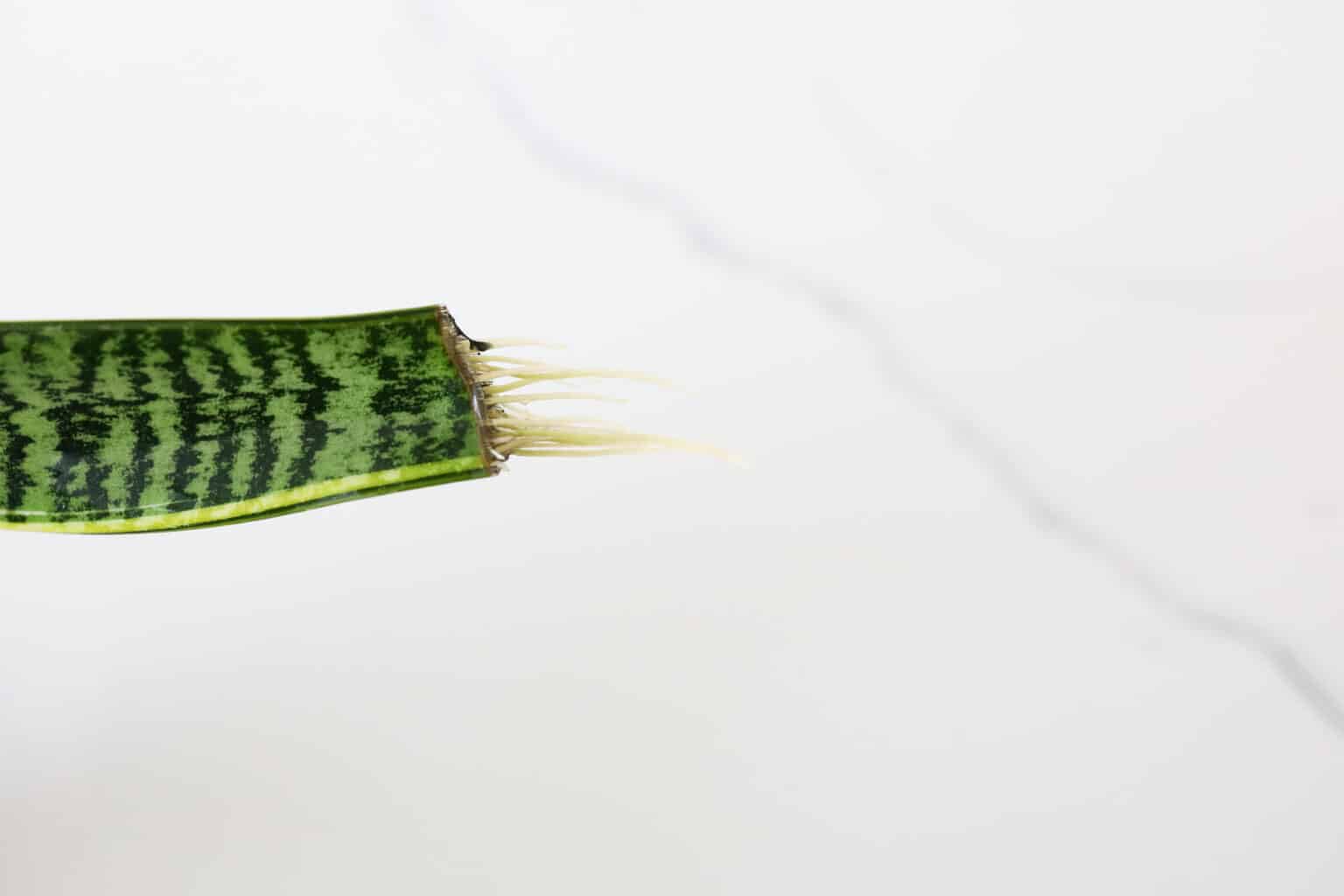
Pros
It’s a very easy one-step method. In fact, you can instantly make a new plant by cutting off a bunch of leaves and planting them in one pot. What’s even better is that you have the freedom to mix together leaves from different varieties of snake plant.
Cons
Same as propagating in water, the new plants will not have the same beautiful pattern and colors. You’ll be getting a more common green breed.
Propagating by Division
This is the best method, in my opinion. Why? Read on!
Step-by-Step Guide
- Pick your snake plant with leaves that reach between 4 and 6 inches tall.
- Take the plant out of the pot. Yes, the entire plant.
- Lay down the plant flat on a hard surface. You’re going to do some plant surgery!
- Remove all the dirt and soil so you can work on a clean plant.
- Using sharp scissors (or a sharp knife), slice the rhizome through the middle to divide the plants. The rhizome is the underground stem that produces the root and the root system. Now you have several divided snake plant cuttings, each complete with a rhizome and roots.
- Prepare new pots by filling them with free-draining soil mix. The ideal mix is cactus soil, palm, and citrus.
- Plant each divided clump/plant into the mix.
- Water it.
- When the soil mix is completely dry, water it again.
Pros
If you want to retain the look of the original plant (like if you have a variegated snake plant), this is the method to use.
Watch new plants grow with identical designs and colors. The end result is rewarding as you will grow beautiful snake plants for your home or to give as presents.
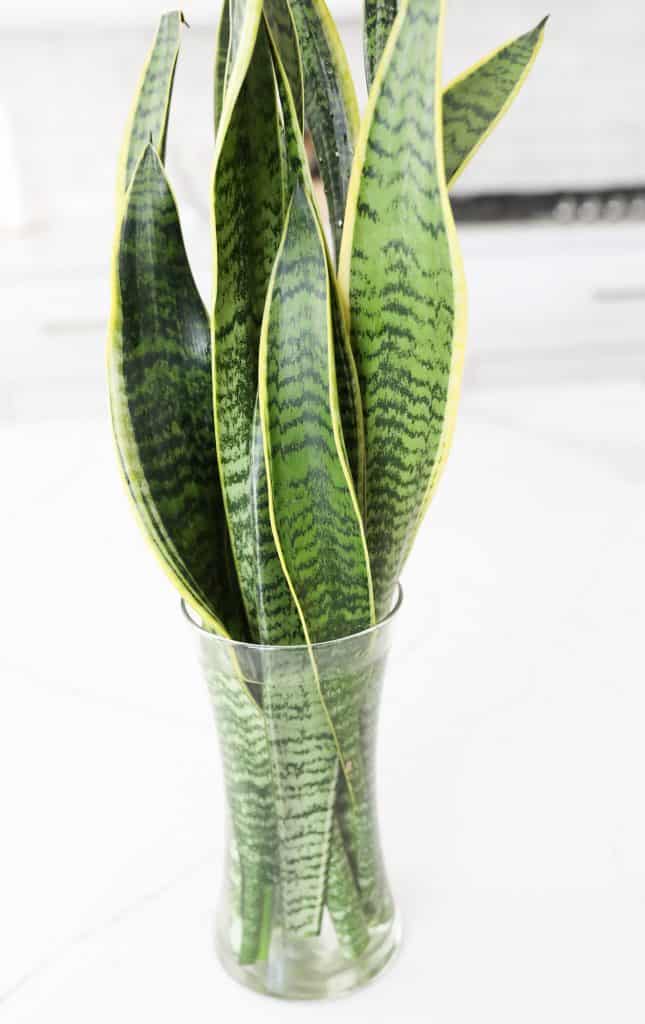
Cons
You have to have a large snake plant to be able to divide it, but otherwise, there aren’t really downsides to this method.
Care After Propagating
You can really only call a propagation successful if you keep the new plant alive after! Here are some tips for taking care of your baby snake plant.
Make sure you’re giving your snake plant the right amount of water. When the top 2 inches of soil feels dry, it’s time to water. The easiest way to figure that out is to simply put your finger into the soil. Never water your plant when it’s wet because too much water can cause root rot or other major issues!
The snake plant isn’t sensitive to changing weather or climate conditions. You can grow them outdoors or indoors, and they’ll be happy. Just make sure you’re not giving too much water (or getting too much from the rain, etc) or leaving them out in cold below 50 degrees Fahrenheit.
As mentioned above, they can grow in most light situations. Ideally they like filtered bright light (think light coming from a sheer curtain) but low light is fine. A snake plant is generally a slow grower and less light can make it even slower.
Invasive
There is such a thing as too many snake plants — they can actually get pretty invasive. They are officially listed as a Category II Invasive Plant by the Florida Exotic Pest Plant Council.
Snake plants produce underground runners and spread and invade the area. So, it is best to keep them in a contained pot.
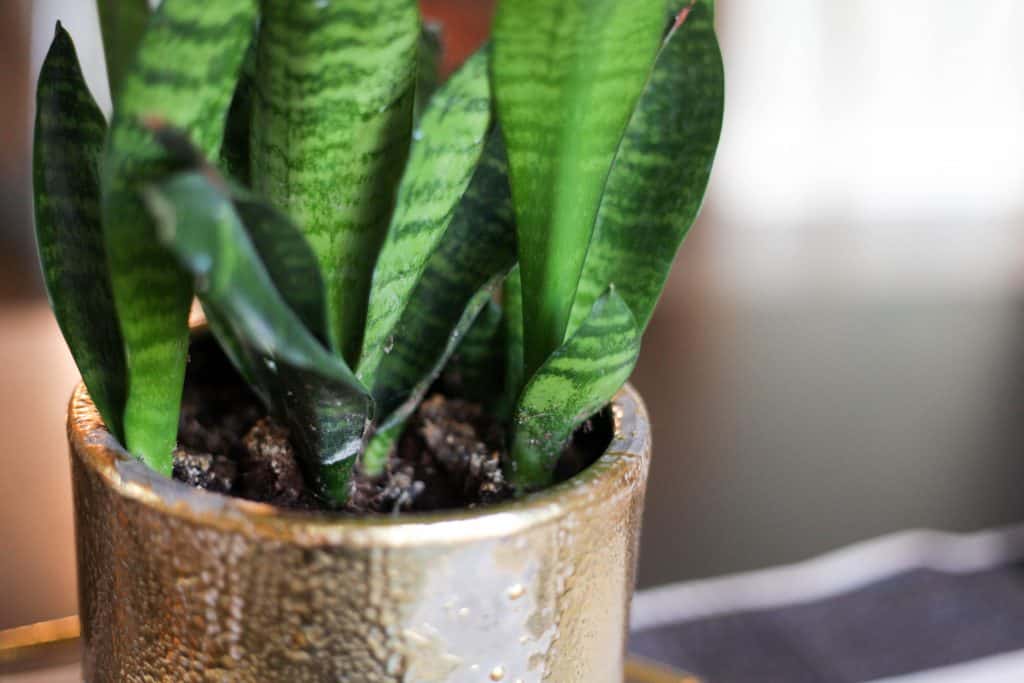
FAQs
Between 3 and 5 weeks. By this time, roots will start to grow. After 3 more weeks, pups will start to emerge. Several months later, you will have a full plant.
It can live in clean water for three months although we have heard that it can be much, much longer than this! Just keep an eye on your plant to ensure it doesn’t get root rot or too slimy as mentioned above.
To cut the leaves, snip nearest the soil line or the base. To cut it for the division method of propagating, divide the rhizome. Just make sure that the rhizome has roots and leaves secure to it.
Maybe you want to just repot your snake plant instead of splitting it? This post will help!
Or if you just need a few more care tips for snake plants, head here!
Be sure to check out another snake plant – the Sansevieria Cylindrica or the Whale Fin Plant!

